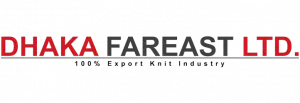Bangladesh is now a hotspot for fashion brands worldwide. It produces clothing for top international players. This transformation into a manufacturing giant took time. Let’s delve into how Bangladesh became a key player.
Emergence of the Garment Industry
Bangladesh became a manufacturing hub due to its garment industry. In the late 1970s, leaders saw the sector’s economic potential. They invested strategically and supported policies, fueling rapid growth.
Low-Cost Labor Advantage
When brands came to Bangladesh, they found skilled, affordable workers. The workforce became vital for global brands seeking cost-effective production.
Competitive Pricing and Fast Fashion
The fashion world shifted to fast fashion. Trends change quickly. Bangladesh became known for producing clothing fast and cheap. Manufacturers adapted to industry demands, attracting brands seeking efficiency.
Industry Expertise and Skill Development
Bangladesh focused on improving garment and textile workers’ skills. They invested in training programs to meet international brands’ demands.
Ethical and Sustainable Practices
Amid growing awareness, Bangladesh’s garment industry embraced ethical and sustainable practices. Manufacturers now prioritize fair labor, ethical sourcing, and eco-friendly production. These changes resonate with socially responsible brands.
Strategic Trade Agreements
The country’s leaders sought trade deals to ease global market access. These pacts cut trade barriers, simplifying international transactions. It’s easier for brands to do business with Bangladesh now.
Investment in Structure
Bangladesh invested in upgrading transportation, logistics, and manufacturing facilities. It boosted efficiency and attractiveness as a manufacturing destination.
Long-Term Partnerships and Trust
Establishing long-term partnerships with global brands showcases Bangladesh’s manufacturing trust. Quality, delivery, and ethics solidify Bangladesh’s reliability as a hub.
Bangladesh’s fashion success is due to many reasons. It started with the garment industry and low labor costs. Their path includes fair pricing, industry expertise, ethical practices, diverse products, trade deals, infrastructure investments, and partnerships. This growth highlights their resilience, adaptability, and dedication to fashion.

